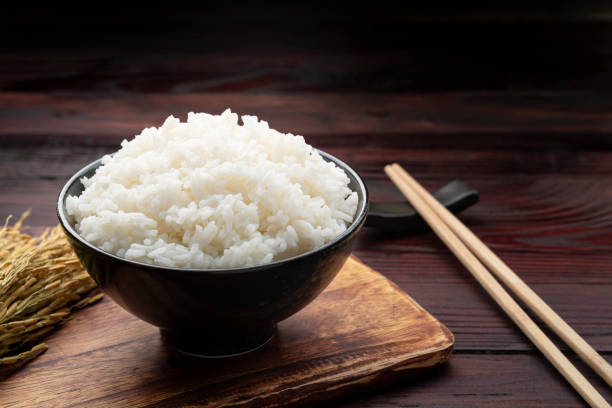Carbohydrates are one of the essential macronutrients that our body needs to function properly. Rice is one of the most commonly consumed staple foods around the world, and understanding its carbohydrate content is crucial to maintaining a balanced diet. In this article, we will take a closer look at the number of carbs in a cup of rice and how it can impact your diet.
Rice is a type of grain that comes in various forms, including white, brown, and black. The number of carbs in a cup of rice can vary depending on the type of rice and how it is prepared. On average, a cup of cooked white rice contains 45 grams of carbohydrates. Brown rice, on the other hand, has slightly more carbs, with about 52 grams of carbohydrates in a cup of cooked rice. Black rice, also known as forbidden rice, has the highest carbohydrate content among the three, with about 34 grams of carbohydrates in a one-cup serving.
It is important to note that the carb content in rice can also be affected by the cooking method. For example, a cup of white rice that is boiled in water will have fewer carbs than a cup of white rice that is cooked in chicken broth. The broth adds additional carbohydrates, which will increase the overall carb count.
Carbohydrates are our body’s main source of energy, and it is essential to consume enough of them to maintain healthy energy levels. However, consuming too many carbs can lead to weight gain and other health problems, such as insulin resistance and type 2 diabetes. Therefore, it is important to pay attention to the number of carbs you consume in a day and to choose carbohydrates that are high in fiber, vitamins, and minerals.
The glycemic index (GI) is a measure of how quickly a food raises blood sugar levels. White rice has a high GI, which means it is rapidly digested and absorbed into the bloodstream, leading to a spike in blood sugar levels. On the other hand, brown rice has a lower GI, which means it is absorbed more slowly into the bloodstream and provides a more gradual release of energy.
It is important to note that the GI of rice can be affected by cooking methods and other foods consumed with it. For example, adding vinegar to rice or cooking it with coconut oil can lower its GI. Additionally, consuming rice with other foods such as protein, fiber, or healthy fats can also slow down digestion and reduce the glycemic impact.
In terms of carbohydrates, one cup of white rice provides around 15% of the daily recommended carbohydrate intake for an adult following a 2000 calorie diet. Brown rice provides slightly more, approximately 16% of the recommended daily carbohydrate intake.
Rice is considered a simple carbohydrate, which means that it is quickly broken down by the body and converted into glucose, the form of sugar that our body uses for energy. While this can provide a quick energy boost, it can also lead to a rapid drop in blood sugar levels, which can cause feelings of fatigue and hunger. To avoid these negative effects, it is best to combine rice with protein and fiber-rich foods, such as vegetables, legumes, and lean meat.
In addition to its carbohydrate content, rice also contains other essential nutrients, such as vitamin B6, iron, and potassium. Brown rice, in particular, is a good source of fiber, with about 3.5 grams of fiber per one-cup serving. Fiber is essential for maintaining a healthy digestive system and for preventing chronic diseases, such as heart disease and type 2 diabetes.
When it comes to choosing the right type of rice for your diet, there are a few things to consider. If you are trying to lose weight or manage a chronic health condition, it may be best to choose brown rice, which has a lower glycemic index and more fiber than white rice. If you are looking for a more flavorful option, black rice is a good choice, as it has a nutty flavor and a chewy texture.
In conclusion, a cup of rice can contain anywhere from 45 to 52 grams of carbohydrates, depending on the type of rice and how it is prepared. While carbohydrates are essential for our body’s energy levels, it is important to choose carbohydrates that are high in fiber, vitamins, and minerals and to limit your intake of simple carbohydrates, such as white rice. To maintain a healthy and balanced diet, it is best to combine rice with protein and fiber-rich foods, such as vegetables, legumes, and lean meat.

 Home
Home Health
Health Diet & Nutrition
Diet & Nutrition Living Well
Living Well More
More












